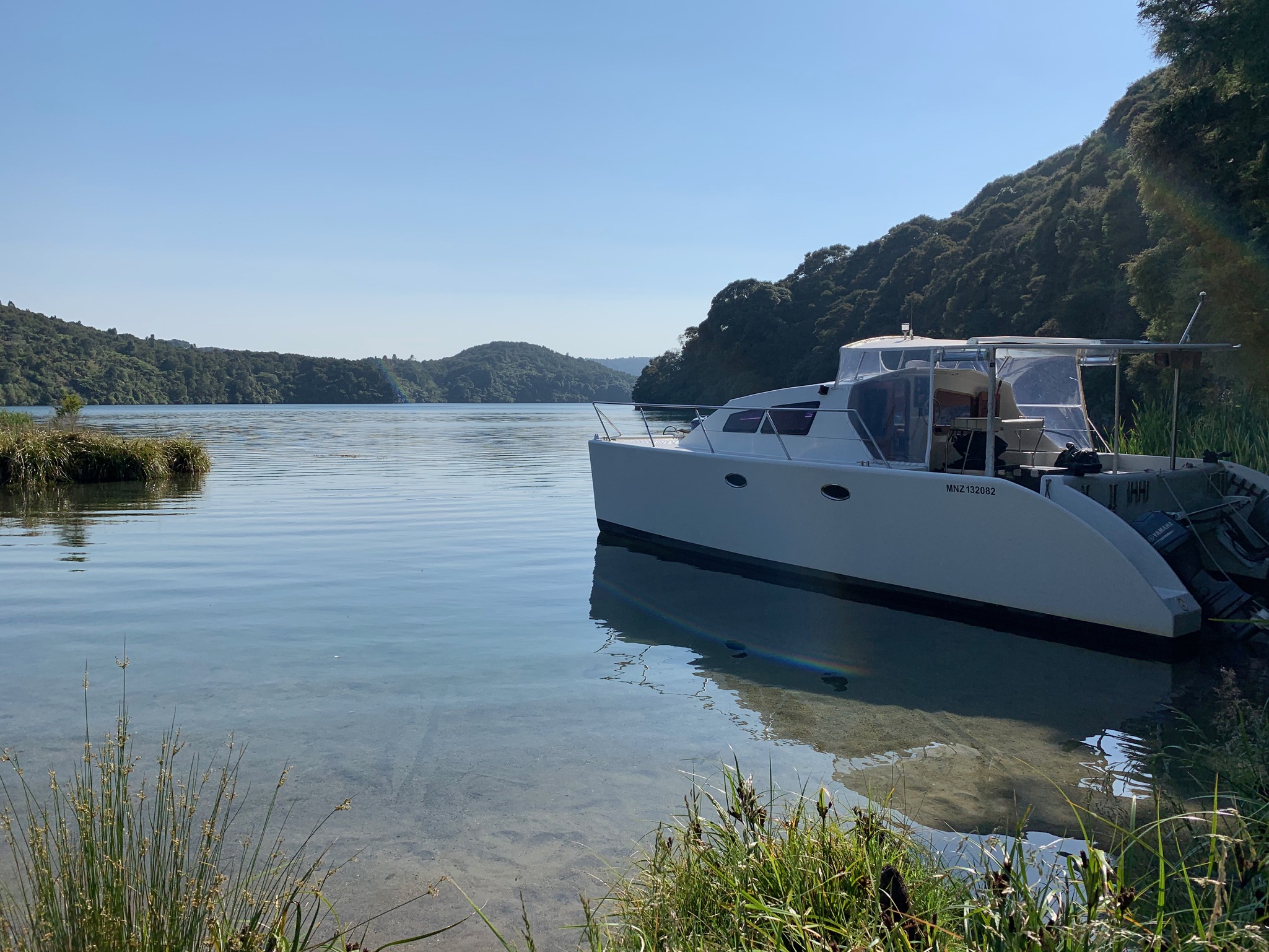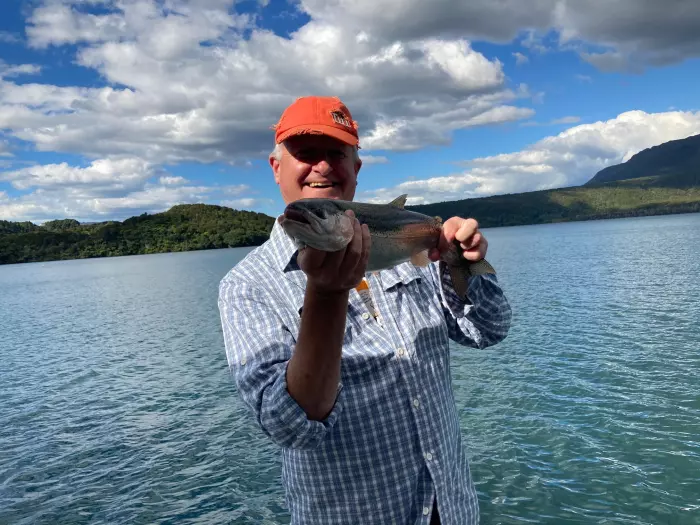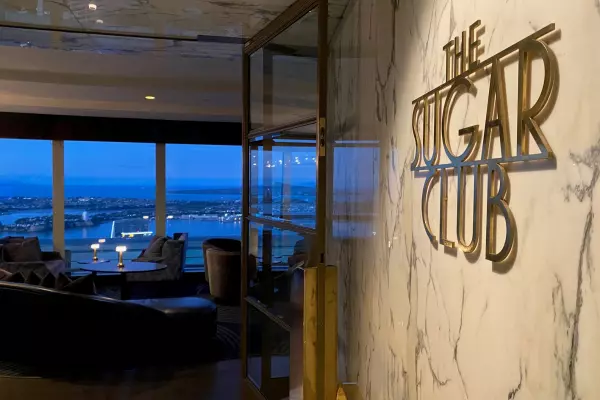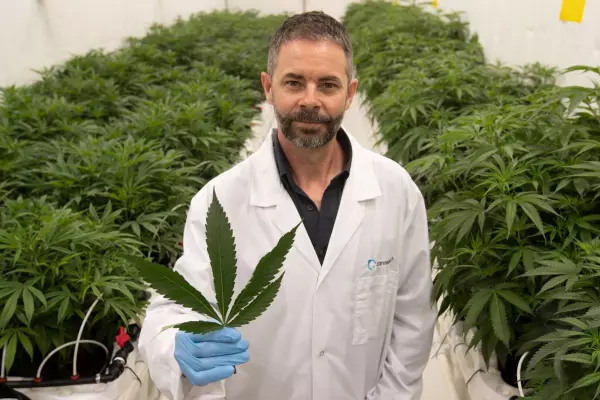Like economists, you can ask five fisherman the same question and get five different answers. It was therefore with some trepidation that I asked a shoal of fishermen, who, like me, were at the excellent Atticus Finch bistro in Rotorua for an evening bite, for their views on the best local freshwater fishing spots.
There was initial silence – the eastern region, after all, boasts 13 lakes and a vast number of streams and rivers.
But, with the help of a few pints of the excellent, locally brewed Croucher Pale Ale, some grudgingly accepted home truths began to emerge.
First up, Lake Rotorua itself is popular with anglers the world over, offering them plenty to chase in the form of rainbow and brown trout during what, on this lake, is a year-round fishing season.
Fly fishing near the river mouth is rewarding, and because the lake itself is relatively shallow – only 25 metres at its deepest point – trolling and spinning are considered the best ways of hooking a feed, particularly during the cooler months.
One of the local fishermen at the bistro claimed to have caught a 10-pound brown – about 4.5kg – on a nymph fly. We believed him, but it’s about double the average size for browns in that lake.
The main thing with Lake Rotorua – and hence its attraction for anglers – is that you don’t need to hang about too long to nab your bag limit, currently set at eight rainbow trout or two browns.
Second, locals like nearby Ngongotahā Stream, which is said to be a legendary spot for brown trout. It also lends itself to fly fishing, which sections of the stream are reserved for.
On the road towards Whakatāne you will find Lake Rotoiti, which is open for fishing from Oct 1 to June 30. Fly-fishing purists are forced to rub shoulders with spinners here, but the consensus – if there could ever be true consensus – is that shallow trolling over the lake’s weed beds is the best bet this time of year.
Lake Tikitapu/Blue Lake was also highly rated by the folk I spoke to. The plan there, particularly in summer, is to get in early before the locals arrive for their swimming and busy water-skiing activity.
It’s not a huge lake so shoreline fishing can work. It may take longer for the reward, but the average for rainbow there is about 1.5kg.
The much smaller Lake Okaro, slightly south of the amazing Waimangu Volcanic Valley – which is something like the land that time forgot – is ideal for those keen on fishing off a kayak or float tube. Fish here are smaller, though, generally under 1kg – and are mainly rainbow.
 Cruise and Fish Rotorua owner John Hamill. Photo: Supplied.
Cruise and Fish Rotorua owner John Hamill. Photo: Supplied.
I took all of that on board, but opted to head the following day to the larger Lake Tarawera, drawn by the promise of potentially the largest rainbow on offer and also attracted by its hot-water beaches and one of the best perspectives of the towering and omnipresent Mt Tarawera.
I wasn’t exactly there at the crack of dawn, attending to a breakfast commitment in the city and getting lost on the way to Solitaire Lodge, the assembly point of the fishing trip. That was with local fishing legend John Hamill, who runs charter fishing company Cruise and Fish Rotorua.
As it turned out, I was the only guest on his “lady of the lake” Nimue, a former catamaran yacht now beautifully adapted to fishing on the 41sq km lake.
 Cruise and Fish Rotorua's 'Nimue'.
Cruise and Fish Rotorua's 'Nimue'.
Hamill has been fishing in the region for the past 40 years. He even boasts his own fishing lure, Hamill’s Killer, using grey partridge and black squirrel tail for colour.
I’d booked a three-and-a-half-hour fishing excursion, and it took a bit going into the breeze to get us to Ngāheretā Bay on the easterly side of the lake, where we managed to land a couple of lively rainbows of about 2kg.
By “we”, I actually mean Hamill, as I managed to lose my first. He joked that we weren’t “snapper fishing now”, and suggested my retrieval method needed to be slightly smoother, thank you very much.
Hamill, with the aid of an expensive electric GPS-linked trolling motor to hold the boat in the lake breeze, managed to locate more fish, and I eventually caught a couple of 2kg-plus keepers closer to Te Rātā Bay, on the southern arm of the lake.
That was close to the lake’s famous Hot Water Beach campsite, where we beached, walked onto the bleeding-hot sand and cooked the filleted fish with fresh mānuka in a super-hot thermally heated spring on the beach.
Hamill made a fascinating observation about the Tarawera trout: “These fish are smart. I’ve seen them chase shoals of smelt into the hot water and then they just gobble up the cooked delicacy.”
On the cruise back – over a quiet beer for me and a cup of tea for Hamill – he tells me Tarawera is the deepest and clearest of all the lakes, averaging about 50 metres and getting to 90 metres in some places.
He says about 70% of the trout are restocked by Fish & Game New Zealand’s hatchery at Ngongotahā, with the rest from wild spawning. Fish from Tarawera also provide brood stock for the rest of the Rotorua lakes.
The start of the season, on Oct 1, is marked by a blessing-the-boats ceremony the evening before and, on the day, the piping-in of a haggis at The Landing Café on the shores of Lake Tarawera.
I’ll definitely be up for that, no argument there.














